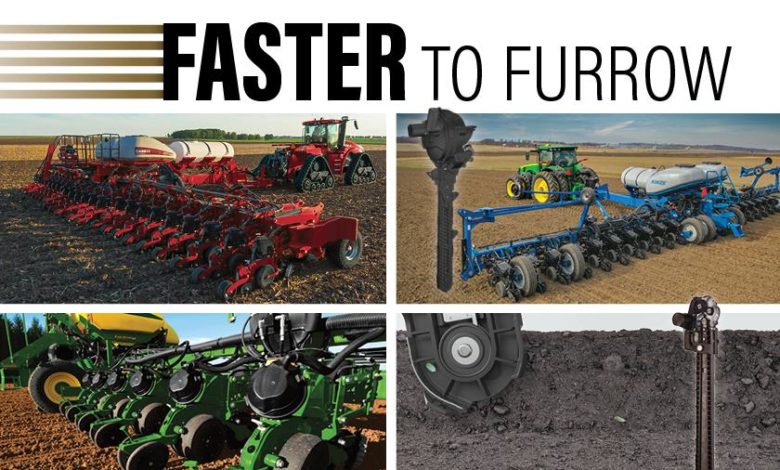As the high-speed planter segment matures and expands, now might be the time to hone this technology on your farm. The first step is to understand its capabilities.
What is High Speed?
“We really try to avoid the term of high speed and instead look at it as high performance,” says Paul Richardel, product manager for planters at John Deere.
David Brennan, the North America marketing manager for Case IH, defines it as, “accuracy at your speed.”
The key is not just running faster. It’s running at a faster speed without sacrificing results.
“The traditional row unit cannot drop seed much faster than 5 mph to 5.5 mph without some impact on depth or spacing,” explains Troy McKown, region manager lead for Precision Planting. “As we increase speed, performance must remain or we lose any of the benefit of covering that ground faster.”
Conditional Ground Conditions
The terrain of a farm can affect the speed at which a planter can run — regardless of model.
“For someone used to running 5 mph, high-speed might be 6.25 mph,” says Eric Broadbent, senior director for sales in North America for Kinze Manufacturing. “For someone else with very flat, very smooth ground, it might be 10 mph or 11 mph.”
Know your field topography, residue levels and rock likelihood, McKown adds. “As you increase speed, that changes the dynamics of how a row unit stays on the ground and in the ground.”
Stay Grounded
Seed-to-soil contact is essential, especially at higher speeds. “One of the underlying issues is row unit bounce,” Broadbent says. “You’ve got to maintain the row unit in contact with the soil at all times.”
Elements such as individual row hydraulic downforce, row cleaners and gauge wheels can help but so can how you manage other activities throughout the year.
“Try to plant between the rows so you’re not bouncing across root balls at an angle,” McKown says. “Run the combine at an angle versus the planter. Try to keep the delivery of seed consistent and maintain optimal depth.”
Settings Matter
Of course, proper settings and equipment prep before the planting race begins are keys to success. Hydraulics also need to keep up as planters move more quickly.
“Now we’re doing hydraulic downforce in conjunction with the pneumatic options for closing wheels and row cleaners,” Richardel says. “That’s going to get you around 60 gal. per minute on the hydraulic flow.”
Richardel says that’s a rule of thumb, but it’s important to know the exact number before hitting the field.
Some of the more aggressive attachments on the row unit do have or can have an impact at the higher speeds.
“With row cleaners, you don’t want to have action that’s throwing material too far and interfering with another row,” Broadbent says. “The same is true with the closing wheel, for example, if you get too aggressive, you can actually start bringing that seed back up on top.”
A lot of the attachments used at the slower speeds are aggressive and farmers need to understand the impact or how they work with these new speeds, he adds.
“My best advice is you’ve got to test this stuff,” Broadbent says. “No matter what we do from a manufacturing standpoint, it doesn’t remove the farmer from having to get out of the cab and go back and check.”
Everything Rungs Faster
Beyond the planter, everything from seed-tenders to fertilizer and people will need to pick up the pace.
“The supply side must keep up with how fast a planter needs refills of seed and fertilizer,” McKown says.
“If you’re gaining minutes or hours in the field, what you don’t want to have happen is lose that time when it’s time to refill,” Broadbent adds.
Often that means carrying more product onboard. “If your limiting factor is being able to refill your fertilizer tanks, then it doesn’t matter how much seed you can carry,” Richardel says.
Watch a session from Farm Journal Field Days
Hear from Case IH, John Deere, Kinze and Precision Planting concerning “The Need for Speed.” The high-speed planter panel, moderated by Clinton Griffiths, “AgDay” host and Farm Journal Editor, will address what you need to know about these planters, such as:
- What are the advantages and disadvantages of high-speed planting based on research?
- What does seed placement look like at higher speeds?
- What do row cleaners, closing wheels, downforce control and down pressure settings impact the success of high-speed planting?
- Higher speed means more bounce so how do farmers avoid skips, doubles and conditions that cause late emergence?


